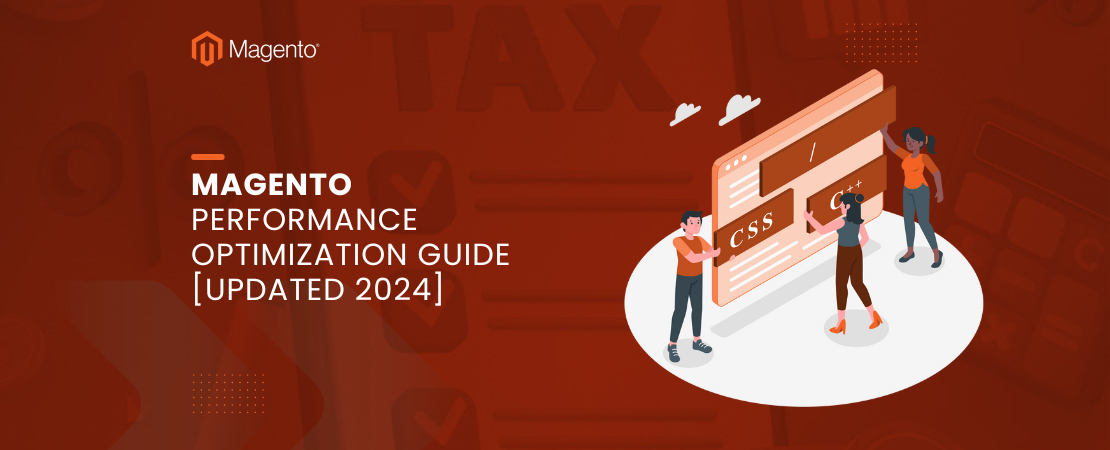AEM Magento Integration is serving as one of the most powerful combinations. It is contributing to boosting the efficiency and effectiveness of the eCommerce industries. Therefore, many online retailers are moving forward with this integration to perform at the best of their potential. It helps them bring the consumers the best eCommerce experience.
The world is rapidly evolving, bringing in the highest degree of convenience in people’s lives. This (r)evolution has been triggered by the onset of technologies. Technology has helped turn innovative ideas and concepts into actual solutions. There is a new tech-powered solution in the market every other day, addressing one of the many pain points in our lives. One of the pain points for every generation has been shopping. Although everyone enjoys it and looks upon it as a therapy, many of them have disliked the exhaustion that comes with it.
Traveling long distances, high fuel consumption, and the tiredness that comes with it have always ruined people’s shopping experiences. This is where the progression of the eCommerce industry is helping people. Thanks to the digital transformation, people now are shopping from their favorite stores, from the comfort of their homes. eCommerce platforms help this industry provide consumers with a flawless end-to-end experience. Some of the most prominent names include Magento, CMS, and digital asset management platforms, such as Adobe Experience Manager (AEM).
Both these platforms make things simple and convenient for eCommerce business owners.
What is Magento?
Magento is an open-source platform for easily setting up eCommerce websites. It is written in PHP. It brings the users a myriad of features that make managing their eCommerce website simple and easy.
Several factors limit the capabilities of Magento that give rise to a need to integrate it with AEM.
- Firstly, Magento’s CMS paves the way for limitations on the storefront due to inefficient coupling of content and backend.
- Not to forget Magento’s limited marketing capabilities.
- When using Magento, the team has to put additional efforts into improving the customer experience.
- Users also struggle with limited options for marketing various merchandise and providing consumers with a multichannel experience.
Read Also Shopify To eBay Integration
What is AEM?
Adobe Experience Manager or AEM is a comprehensive content and other digital asset management platform. It offers an end-to-end solution to the building and management of websites and mobile applications. With this platform, it becomes easy to prepare powerful marketing content.
Read Also Shopify Walmart integration
What are the Features of Magento and AEM Integration?
Many would question why they need an additional CMS when Magento already has its own version. The CMS integrated within by Magento is useful for small-scale eCommerce setups. However, when the businesses expand, the Magento Development Companies fail to leverage the platform’s CMS to keep up with the expansion.
This is why AEM Magento Integration is becoming a common practice among eCommerce businesses.
AEM Magento integration makes up for this lacking. AEM strengthens Magento in a myriad of ways. To begin with, AEM helps create a strong and rich storefront experience for the users. Adding to this capability is its Product Teaser/Product Carousel. Moreover, it is a very useful tool that helps in creating powerful experience pages. AEM brings Magento its elite commerce capabilities while offering companies a chance to equip themselves with powerful omnichannel capabilities.
Integrating two powerful platforms, the best within their domains amplifies the already existing capabilities. It is critical for every eCommerce business owner to understand this. Although eCommerce is the best way to boost a retail store’s profits as it allows targeting a wider audience, it also benefits those who adopt smart strategies.
The integration of Magento and AEM brings numerous powerful benefits. It is one of the smartest approaches to manage the entire eCommerce brand.
Easy and Convenient Multichannel Updates
When companies run discount campaigns or revise the prices of their products, the biggest challenge they face is updating the information across all its channels. There are high chances of human errors. However, with AEM Magento integration, this becomes less of a challenge.
It allows eCommerce stores to effectively make changes to various fields of product details. It includes stock status, title, and price, across all channels.
Seamless and Stress-free Campaign Implementation
There are many scenarios where companies need to alter their marketing campaigns. Some common ones include a product receiving a phenomenal response or a campaign not providing the desired results. However, in this situation, hiring a Magento development company might not be the smartest approach.
When eCommerce companies find themselves in such a situation, they can leverage the AEM Magento integration. Companies can easily create powerful experience pages for short-term campaigns with the product teasers and carousels capability of AEM.
Efficient Asset Management
There is a reason why large-scale corporations and growing eCommerce companies are opting for integrating these powerful platforms. Magento as a separate entity is beneficial for setting up and managing small-scale eCommerce companies. However, when a business begins to grow, there are some shortcomings of Magento while managing small-scale businesses.
Thousands of assets can be easily managed by large-scale companies with the AEM DAM system built within the platform.
Access to Actionable Insights
Data is one of the greatest tools for every business, regardless of industry. The AEM integration in Magento offers a capability to gather actionable insights with its built-in analytics tool. Moreover, it offers integration to other adobe tools, including Campaign, Audience Manager, and Target. It adds to Magento’s Business Intelligence, providing companies with a chance to leverage data to make well-informed decisions.
How Magento and AEM Integrate?
Now that you know the magic that this powerful combo can make happen for your eCommerce business, it’s time to get to the technical details. The most important question here is how do these powerful platforms integrate?
Commerce Integration Framework (CIF) has been created by Adobe for seamless integration of these two platforms. This tool has been specifically designed to help process complex commerce integrations such as Magento AEM integration.
To process this integration, CIF plays a key role as it enables the entire integration. Meanwhile, Magento serves as the backend solution for eCommerce, storing all the data and business logic. This tool by Adobe brings the required tools, including the code, documentation, and components that make this integration process seamless and smooth.
Conclusion:
If viewed as separate platforms, both Adobe Experience Manager and Magento are powerful tools. Within their domain, they are the top performers. Unfortunately, nothing in this world is perfect. There are several limitations to both these platforms. However, merging these two through a CIF connector helps amplify Magento capabilities.
Given how beneficial these two platforms are as separate entities, imagine the magic they will bring when they come together in the form of AEM Magento integration. While Magento comes with its own CMS, combining it with AEM amplifies its capabilities, providing eCommerce businesses with an added advantage in the market.
Magento support services can significantly help you. However, there’s nothing much they can do to address the lack of software or a platform. It is best to take the wiser approach and opt for AEM Magento integration.
If you’re looking for a way to make things easy for you while setting up and running a business, you need to go for AEM Magento integration.
FAQs:
Q: How does Magento integrate with AEM?
Magento is integrated with AEM through the eCommerce Integration Framework (CIF) connector. This connector was created by Adobe.
Q: What is AEM Magento?
AEM Magento is a powerful integration of two top players of the market. Magento is the top eCommerce platform combined with Adobe Experience Manager to magnify its already existing capabilities and offer consumers a satisfying shopping experience.
Q: What is AEM Integration?
AEM or Adobe Experience Manager Integration is a technique to amplify the capabilities of any eCommerce platform. It helps:
- create rich storefront experiences
- improve customer experience
- create/alter campaigns
- Do much more with marketing content than any other eCommerce platform.
Q: How is AEM good for eCommerce?
AEM is one of the best tools for eCommerce businesses. It allows companies to curate perfectly tailored experiences for online shoppers through social platforms, websites, or online portals. The digital asset management software works wonders to deliver a branded solution for eCommerce setups.
Related Blogs:
What Is Magento API Integration And How To Use It?
Magento QuickBooks Integration – How To Integrate Magento With QuickBooks







